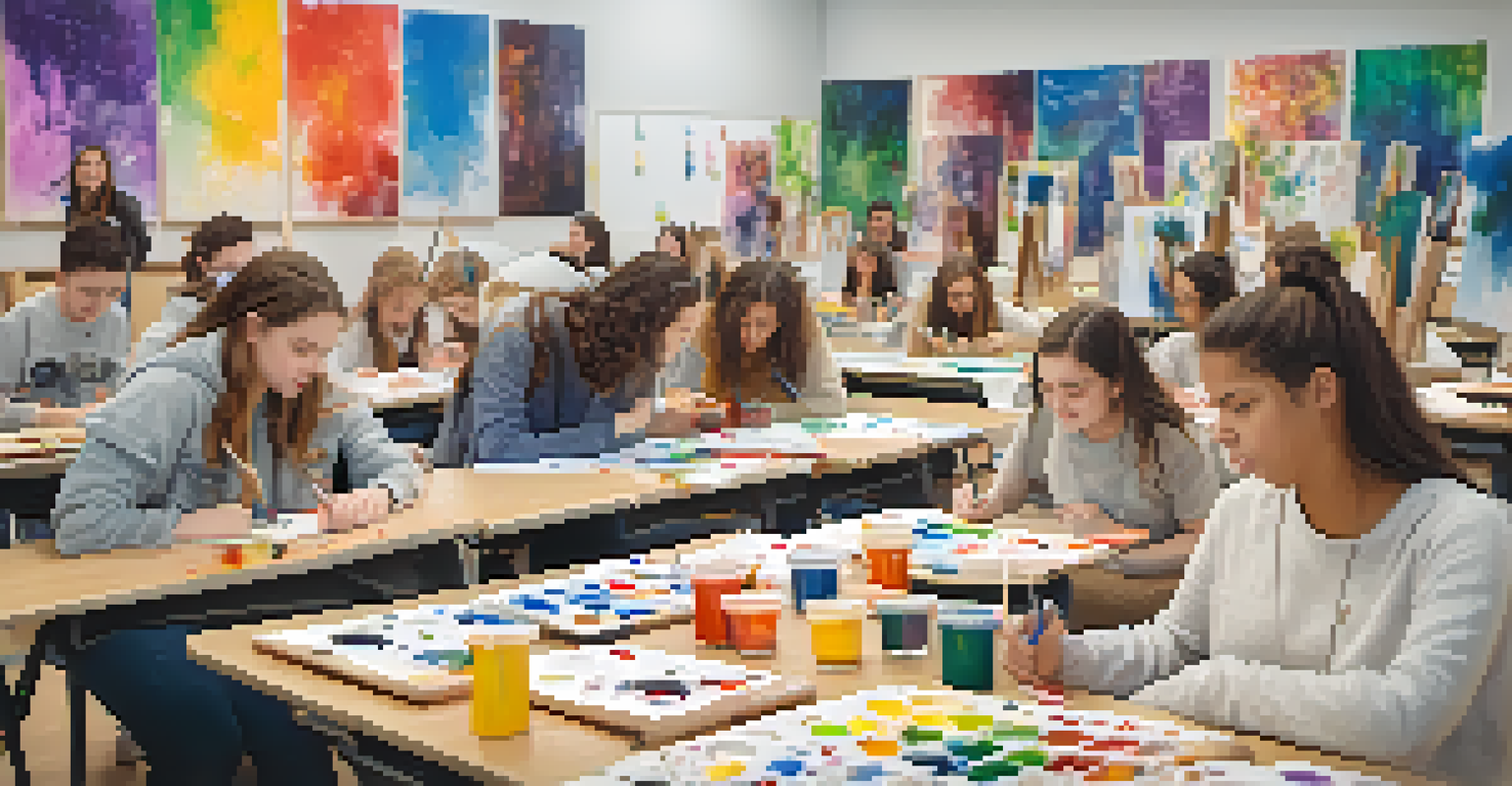Strategies for Teaching Emotional Regulation in Schools

Understanding Emotional Regulation and Its Importance
Emotional regulation refers to the ability to manage and respond to emotional experiences in a healthy way. In schools, this skill is crucial as it helps students navigate their feelings and reactions in various social situations. By learning to regulate their emotions, students can enhance their focus, improve relationships, and reduce behavioral issues.
Emotional intelligence is the key to both personal and professional success.
When students struggle with emotional regulation, they may face challenges like anxiety, aggression, or withdrawal. These behaviors not only affect their learning but can impact the classroom environment as well. Therefore, integrating emotional regulation strategies into the curriculum is essential for fostering a positive school climate.
Educators play a significant role in teaching emotional regulation. By understanding and modeling these strategies, teachers can create an atmosphere that encourages students to express and manage their emotions effectively. This foundation can lead to improved academic performance and healthier peer interactions.
Creating a Safe and Supportive Classroom Environment
A supportive classroom environment is the backbone of effective emotional regulation. Students need to feel safe to express their emotions without fear of judgment or ridicule. Establishing clear classroom rules and fostering mutual respect can help create this safe space.

Teachers can encourage open communication by regularly checking in with students about their feelings. Simple practices like morning meetings or sharing circles can help students feel heard and valued. This openness can also promote empathy among peers, making it easier for them to support one another.
Emotional Regulation is Essential
Emotional regulation helps students manage their feelings, enhancing focus, relationships, and overall classroom environment.
Additionally, incorporating elements of social-emotional learning (SEL) into daily activities can reinforce the importance of emotional regulation. By integrating SEL principles into academics, students learn that managing their emotions is just as important as their grades.
Teaching Mindfulness Techniques to Students
Mindfulness techniques are powerful tools for emotional regulation. These practices teach students to focus on the present moment, helping them recognize and manage their emotions as they arise. Simple breathing exercises, guided imagery, or even mindful walking can be easily integrated into daily routines.
Creativity takes courage.
For instance, starting a class with a few minutes of deep breathing can help students center themselves and reduce anxiety. This practice not only calms their minds but also enhances their ability to concentrate on learning. Over time, students can develop a toolkit of mindfulness strategies they can use in various situations.
Encouraging students to engage in mindfulness activities regularly can foster resilience. As they become more aware of their emotions and reactions, they learn to respond thoughtfully rather than react impulsively, which is key to balancing emotional responses.
Implementing Social-Emotional Learning Programs
Social-Emotional Learning (SEL) programs provide structured approaches to teaching emotional regulation. These programs typically focus on skills such as self-awareness, self-management, social awareness, relationship skills, and responsible decision-making. Schools can adopt or develop curricula that align with these goals.
By implementing SEL programs, schools can create a consistent language around emotions and regulation. This common framework allows students to understand and discuss their feelings more openly, making emotional literacy an integral part of their education.
Mindfulness Boosts Emotional Skills
Incorporating mindfulness techniques in schools can empower students to recognize and manage their emotions effectively.
Moreover, SEL programs often include activities that promote collaboration and conflict resolution. These skills are essential for building healthy relationships and can reduce instances of bullying and social isolation among students.
Incorporating Art and Creative Expression
Art and creative expression offer unique avenues for emotional regulation. Engaging in activities like drawing, painting, or writing can provide students with a safe outlet for their emotions. This creative process can help them articulate feelings they may struggle to express verbally.
For example, journaling allows students to reflect on their day and process their emotions in a private space. In art classes, students can explore themes of identity and emotion, which can deepen their understanding of themselves and others. Such activities not only foster emotional regulation but also enhance creativity and critical thinking.
Furthermore, showcasing students' creative works can build confidence and a sense of community. When students share their creations, it fosters connections and discussions about emotions, further reinforcing their ability to regulate feelings in a supportive environment.
Encouraging Peer Support and Collaboration
Peer support is a vital aspect of emotional regulation in schools. Encouraging students to work together fosters a sense of community and belonging, which can significantly impact their emotional well-being. Group activities or projects can help students develop empathy and learn from one another's experiences.
For instance, establishing buddy systems or peer mentoring programs can create opportunities for students to support each other. These relationships can provide a safe space for students to discuss their feelings and share coping strategies. This kind of collaboration not only strengthens emotional skills but also builds trust among peers.
Family Involvement Supports Learning
Engaging families in emotional regulation education creates a consistent support system for students both at home and in school.
Moreover, facilitating group discussions about emotions can help normalize the conversation around feelings. When students see their peers sharing similar struggles and successes in emotional regulation, it can empower them to seek help and develop their skills collectively.
Involving Families in Emotional Regulation Education
Involving families in emotional regulation education enhances the effectiveness of these strategies. When schools and families work together, students receive consistent messages about managing emotions both at home and in school. Educators can provide resources and workshops for parents to support their children's emotional development.
For example, hosting family nights focused on emotional regulation can create a supportive community. These events can include activities that families can practice together, reinforcing the skills learned at school. When parents are engaged, students feel more supported and understood, which can improve their emotional resilience.

Additionally, schools can encourage open communication between teachers and families regarding students' emotional challenges. This collaboration allows for tailored strategies that meet individual students' needs, ensuring they have the tools to thrive emotionally.